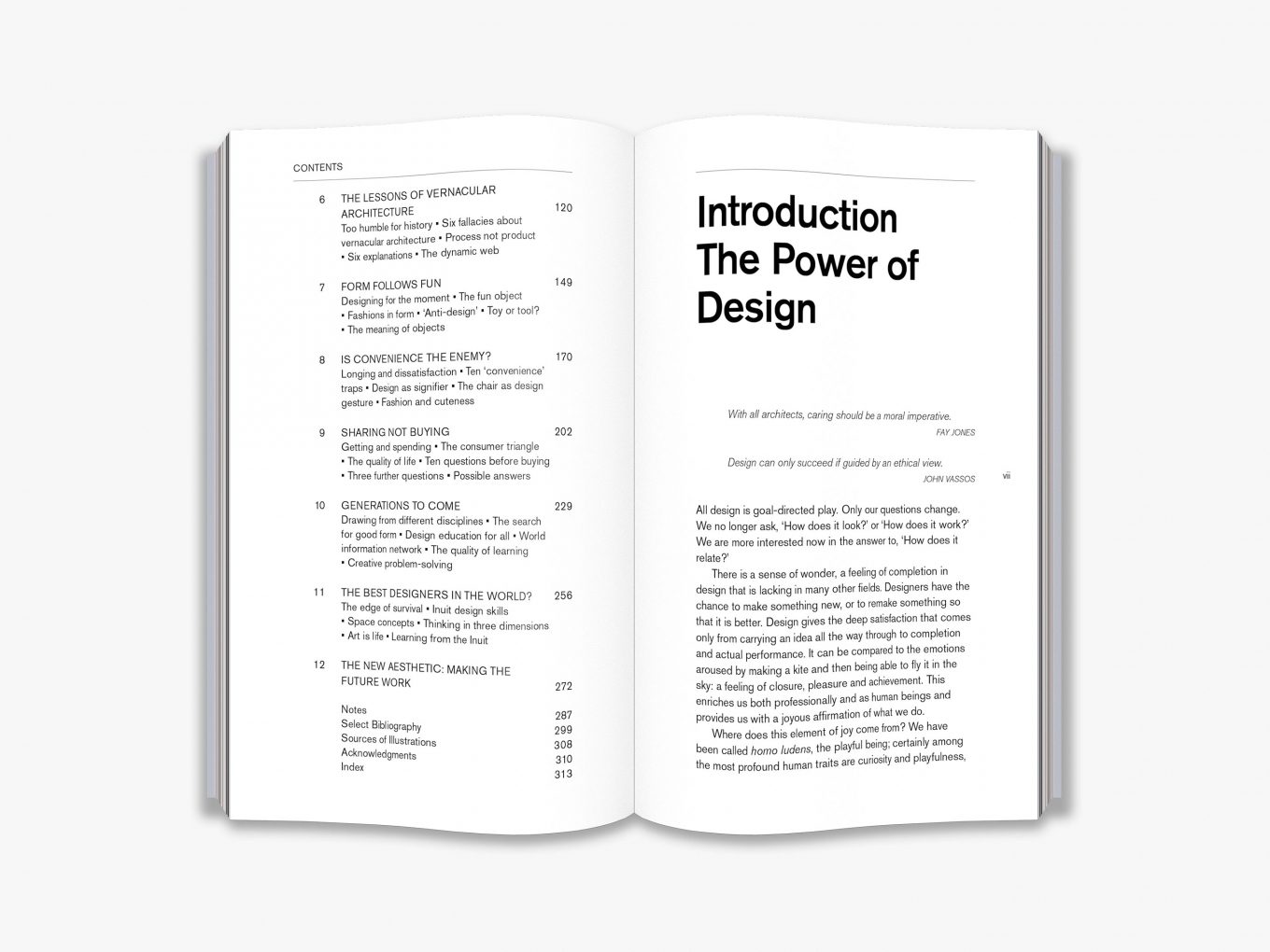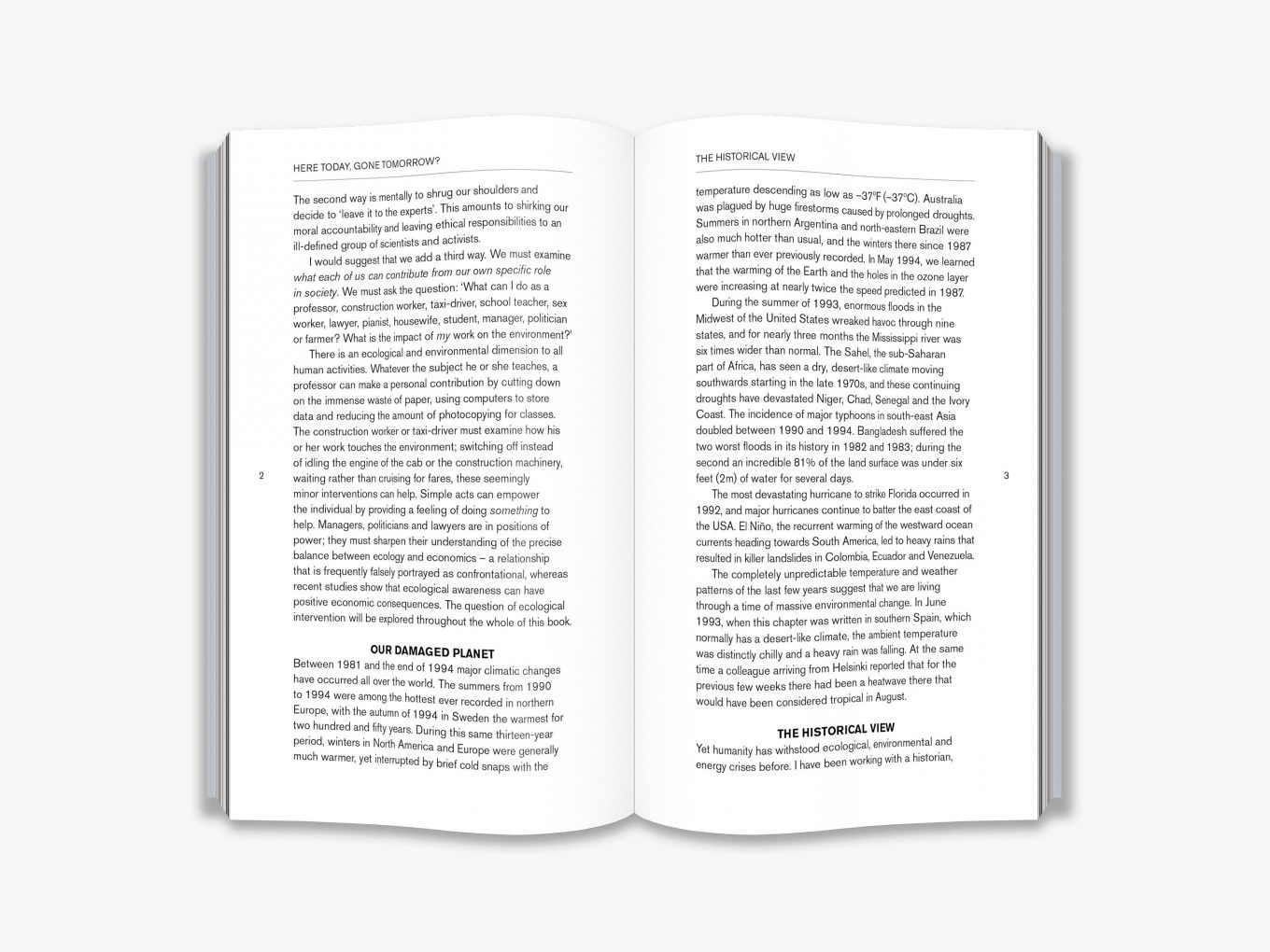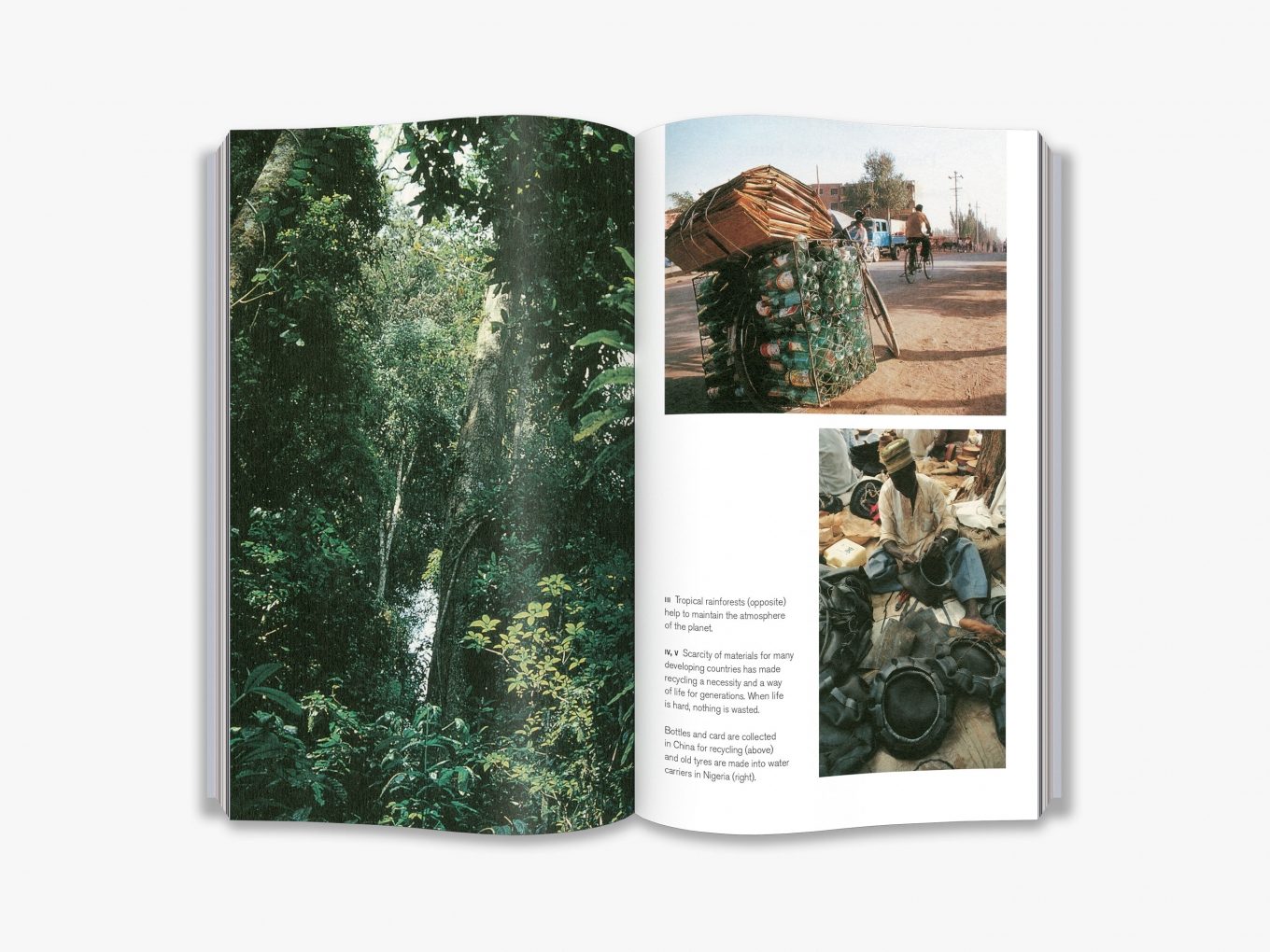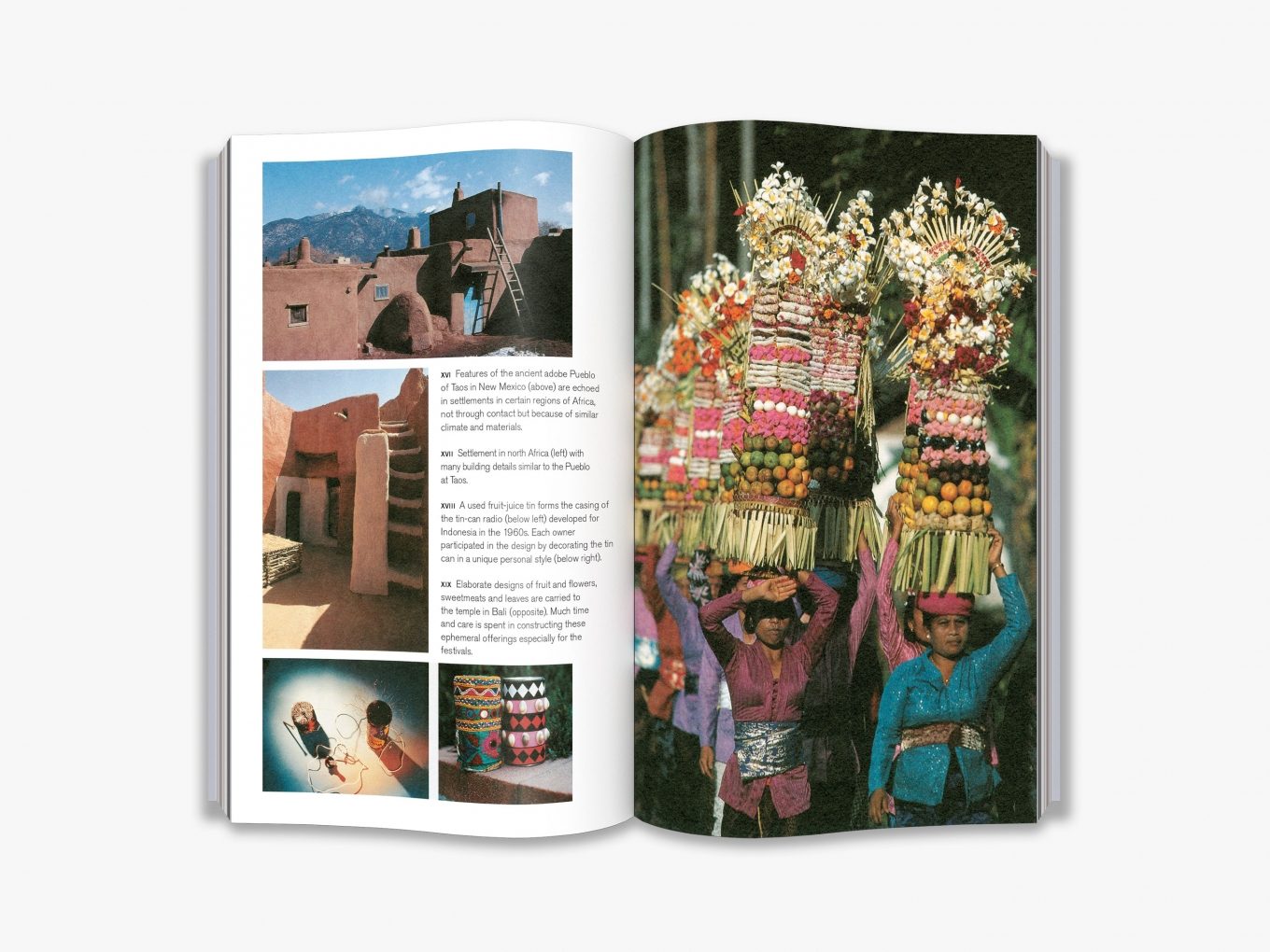EU shipping is temporarily suspended
£12.99
A fresh edition of the sustainable design pioneer Victor Papanek’s classic and ever-relevant book
See InsideOverview
What is the purpose of design and architecture? How can designers forge a more sustainable path? Why must we all demand better? The Green Imperative is an urgent call to arms to consider the impact our choices have on the environment before it’s too late.
Based on decades of experience as a designer and educator, Victor Papanek makes a compelling case for more meaningful design at a human scale, using examples from packaging to parking lots, playing cards to playgrounds. This means designing for the long term, using less and re-using more, and sharing resources.
By busting the ‘bigger is better’ myth and challenging the idea of design progress, Papanek guides us all – designers, architects and, crucially, consumers – towards a greener future. His clear prose is as passionate about the possibility for change as it is insightful and instructive.




Reviews
'Important and timely … a valuable resource for those trying to steer an ethically and ecologically informed path through the world of contemporary professional design practice'
Neil Maycroft, Associate Professor at the Lincoln School of Design
'The lessons sustainable design pioneer Papanek imparts are as relevant in 2021 as they ever have been'
Design Week
Product Information
Book Details
Format: Paperback
Size: 19.8 x 12.9 cm
Extent: 352 pp
Illustrations: 141
Publication date: 5 August 2021
ISBN: 9780500296196
Contents List
Introduction: The Power of Design
1. HERE TODAY, GONE TOMORROW?
Our damaged planet • The historical view • The acceleration of disaster • Healing on a human scale • Is time on our side?
2. DESIGNING FOR A SAFER FUTURE
Production and pollution • Product assessment • Packaging and shrouding • The problem with plastics • Millions of tyres • Green Design • Profit and politics • Design in the 21st century
3. TOWARD THE SPIRITUAL IN DESIGN
The function of beauty • The designer’s intent • Design for Disassembly • Exploiting every scrap • People participation • Designer as entrepreneur • Evaluating new technologies • Design ethics • Transforming the assignment
4. SENSING A DWELLING
Mood and environment • The dimension of light • Footfalls • Feeling the fabric • The sense of smell • Responses to space • Sounds and rhythms • Organic geometry • The collective unconscious • Benign architecture
5. THE BIOTECHNOLOGY OF COMMUNITIES
Finding the centre once more • People not traffic • The aesthetics of site • The sense of location • Nature’s magic numbers • Ideal community size
6. THE LESSONS OF VERNACULAR ARCHITECTURE
Too humble for history • Six fallacies about vernacular architecture • Process not Product • Six explanations • The dynamic web
7. FORM FOLLOWS FUN
Designing for the moment • The fun object • Fashions in form • ‘Anti-design’ • Toy or tool • The meaning of objects
8. IS CONVENIENCE THE ENEMY?
Longing and dissatisfaction • Ten ‘convenience’ traps • Design as signifier • Chair as design gesture • Fashion and cuteness
9. SHARING NOT BUYING
The consumer triangle • The quality of life • Ten questions before buying • Three further questions • Possible answers
10. GENERATIONS TO COME
Drawing from different disciplines • The search for good form • Design education for all • World information network • The quality of learning • Creative problem-solving
11. THE BEST DESIGNERS IN THE WORLD?
The edge of survival • Inuit design skills • Space concepts • Thinking in three dimensions • Art is life • Learning from the Inuit
12. THE NEW AESTHETIC: MAKING THE FUTURE WORK
1. HERE TODAY, GONE TOMORROW?
Our damaged planet • The historical view • The acceleration of disaster • Healing on a human scale • Is time on our side?
2. DESIGNING FOR A SAFER FUTURE
Production and pollution • Product assessment • Packaging and shrouding • The problem with plastics • Millions of tyres • Green Design • Profit and politics • Design in the 21st century
3. TOWARD THE SPIRITUAL IN DESIGN
The function of beauty • The designer’s intent • Design for Disassembly • Exploiting every scrap • People participation • Designer as entrepreneur • Evaluating new technologies • Design ethics • Transforming the assignment
4. SENSING A DWELLING
Mood and environment • The dimension of light • Footfalls • Feeling the fabric • The sense of smell • Responses to space • Sounds and rhythms • Organic geometry • The collective unconscious • Benign architecture
5. THE BIOTECHNOLOGY OF COMMUNITIES
Finding the centre once more • People not traffic • The aesthetics of site • The sense of location • Nature’s magic numbers • Ideal community size
6. THE LESSONS OF VERNACULAR ARCHITECTURE
Too humble for history • Six fallacies about vernacular architecture • Process not Product • Six explanations • The dynamic web
7. FORM FOLLOWS FUN
Designing for the moment • The fun object • Fashions in form • ‘Anti-design’ • Toy or tool • The meaning of objects
8. IS CONVENIENCE THE ENEMY?
Longing and dissatisfaction • Ten ‘convenience’ traps • Design as signifier • Chair as design gesture • Fashion and cuteness
9. SHARING NOT BUYING
The consumer triangle • The quality of life • Ten questions before buying • Three further questions • Possible answers
10. GENERATIONS TO COME
Drawing from different disciplines • The search for good form • Design education for all • World information network • The quality of learning • Creative problem-solving
11. THE BEST DESIGNERS IN THE WORLD?
The edge of survival • Inuit design skills • Space concepts • Thinking in three dimensions • Art is life • Learning from the Inuit
12. THE NEW AESTHETIC: MAKING THE FUTURE WORK
About the Author
Victor Papanek was a distinguished designer, educator and writer, widely praised for his visionary and strongly expressed ideas on design theory. Born in Vienna and educated in England before emigrating to the US in the 1930s, he also spent time living with and learning from Navajo, Inuit and Balinese peoples over the course of his career. He was J.L. Constant Distinguished Professor at the School of Architecture and Urban Design at the University of Kansas as the time of his death in 1998.
